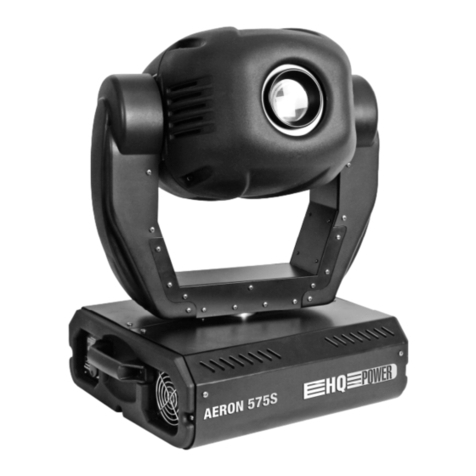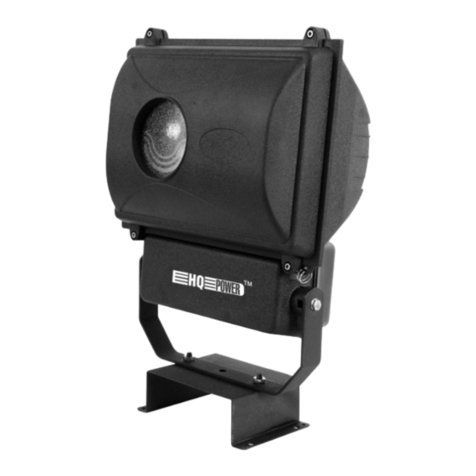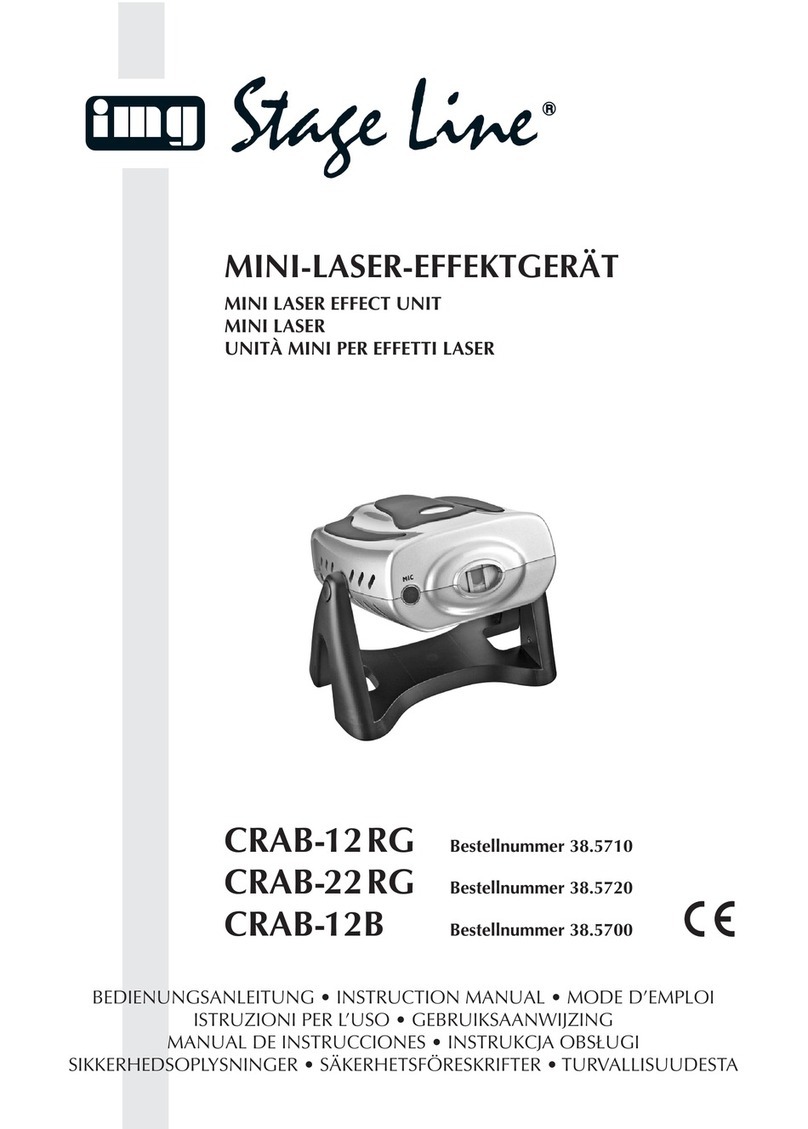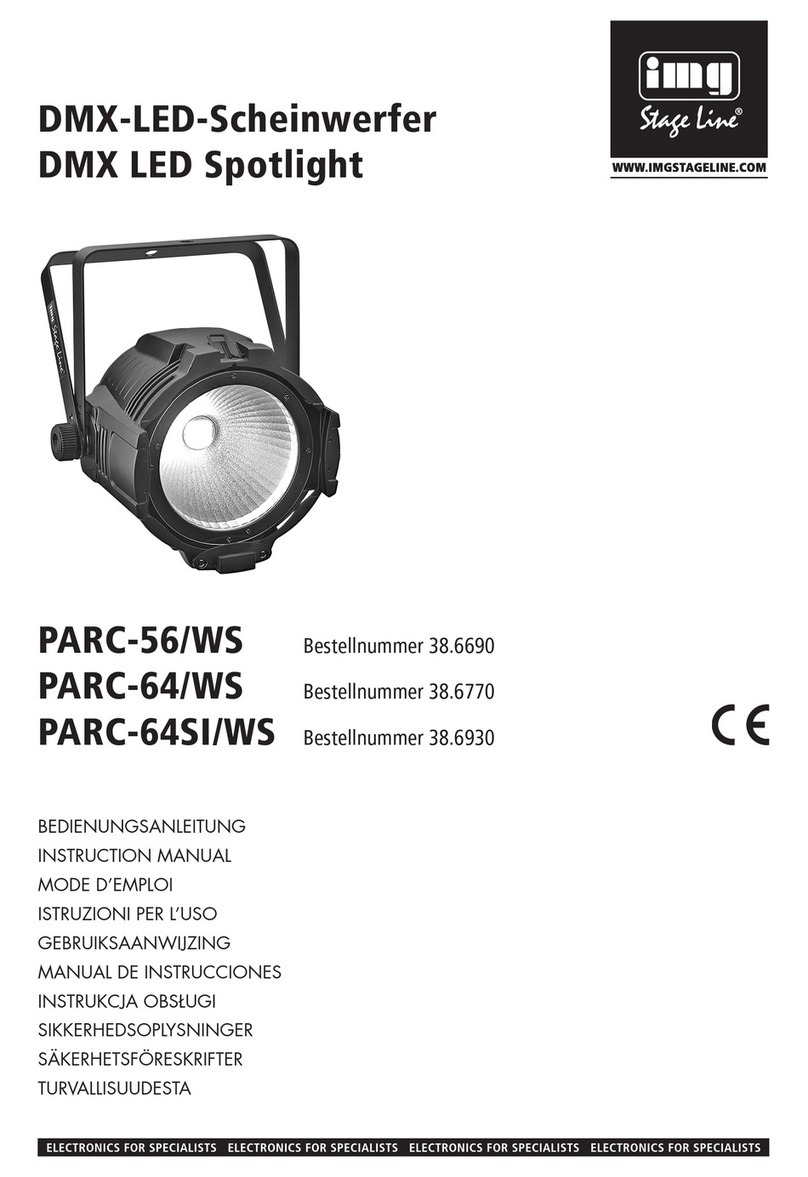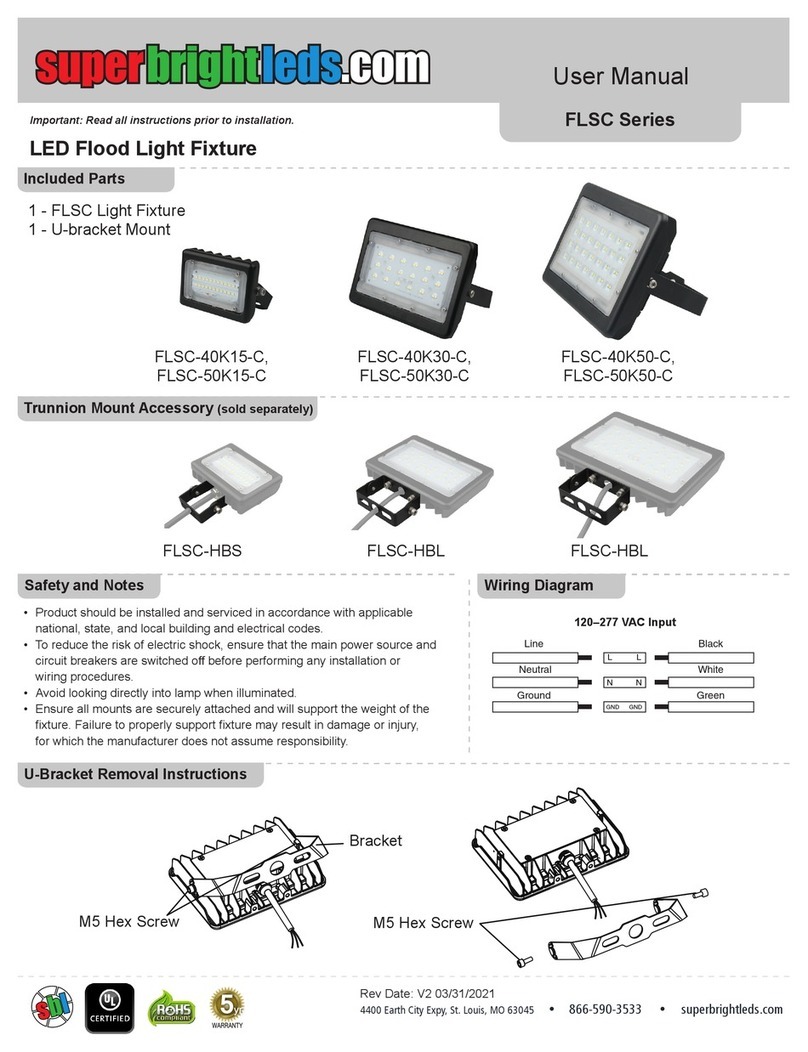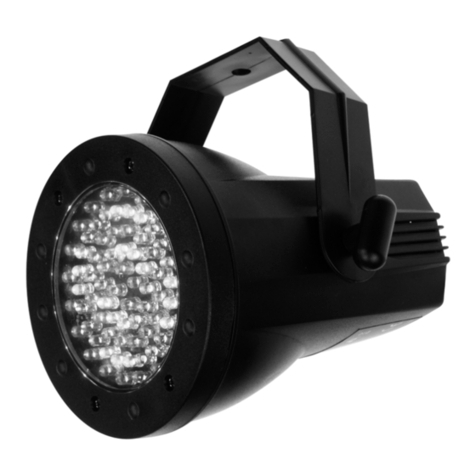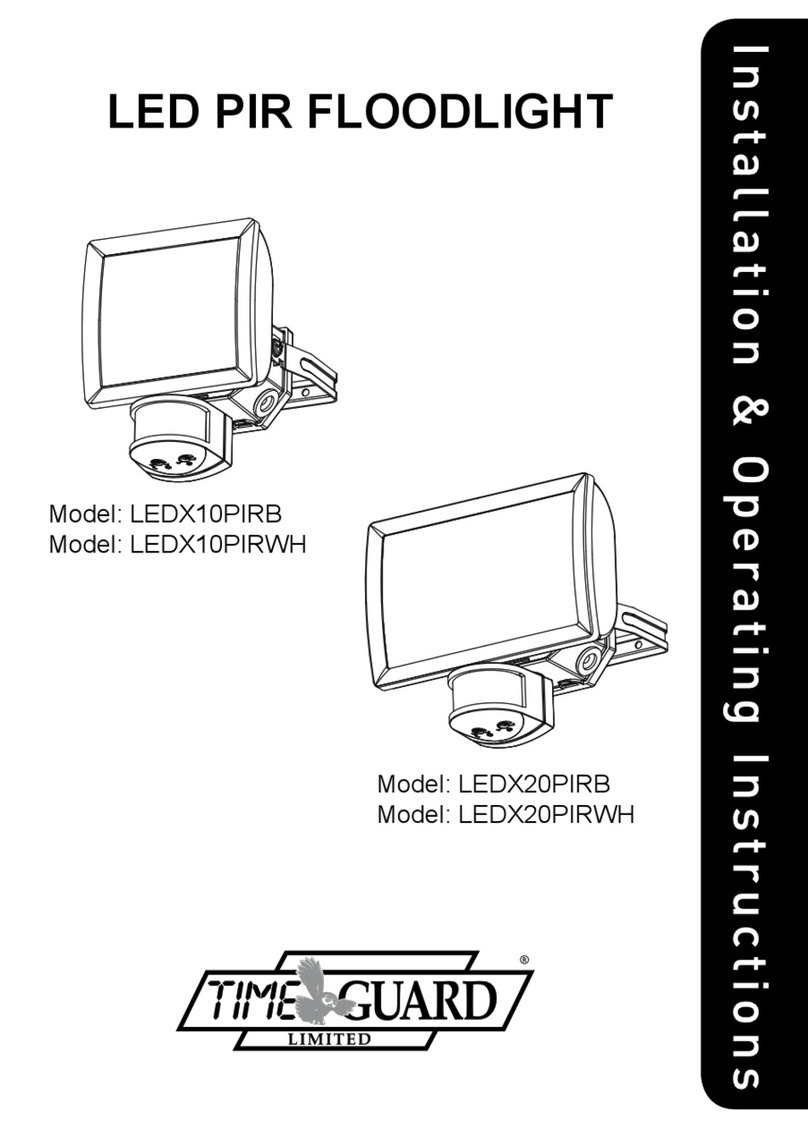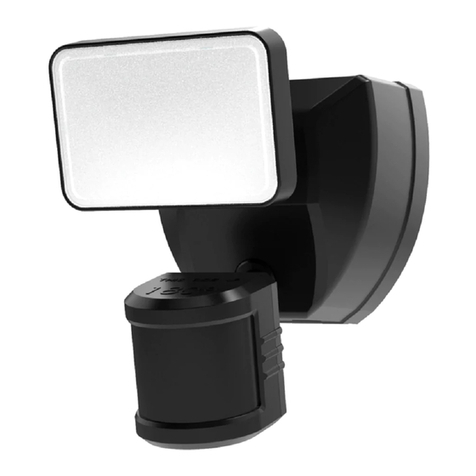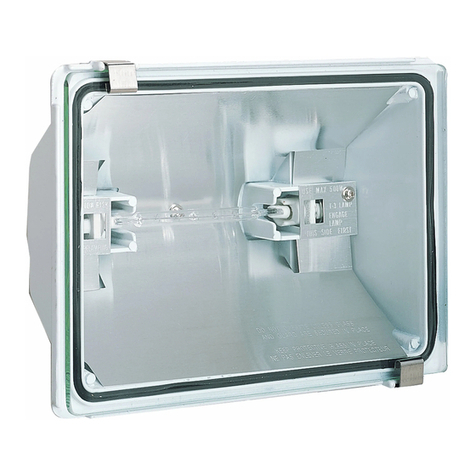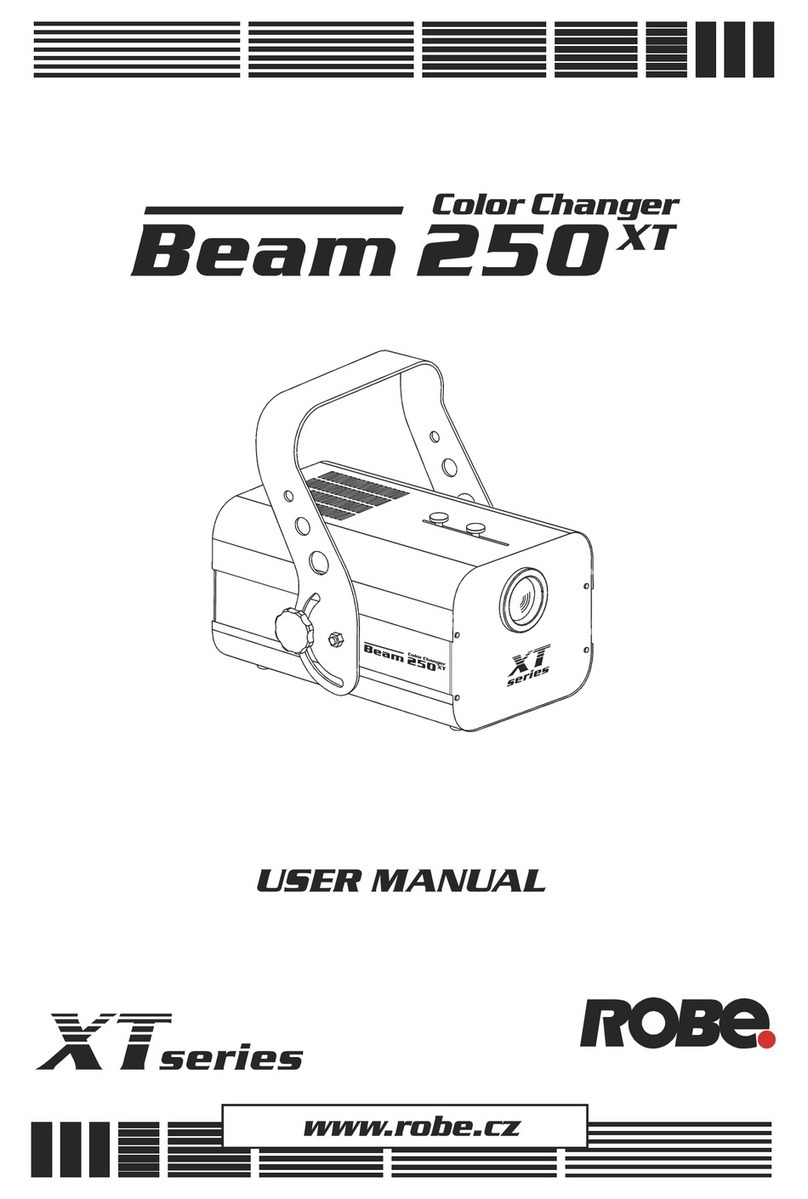Biral BTD-200 User manual

i
BTD-200
Lightning Warning System
BTD-200
Lightning Warning System


1
PROPRIETARY NOTICE
The information contained in this manual (including all illustrations, drawings,
schematics and parts lists) is proprietary to BIRAL. It is provided for the sole purpose
of aiding the buyer or user in operating and maintaining the sensor. This information is
not to be used for the manufacture or sale of similar items without written permission.
COPYRIGHT NOTICE
This document has been prepared by Bristol Industrial and Research Associates Limited
and contains copyright material belonging to the company.
No part of this manual may be reproduced without the express permission of BIRAL.
© 2019 Bristol Industrial and Research Associates Limited (BIRAL).
Manual Number: 107511
Revision: 01B
Biral –P O Box 2, Portishead, Bristol BS20 7JB, UK
Tel: +44 (0)1275 847787
Fax: +44 (0)1275 847303
www.biral.com

2
CONTENTS
1HOW TO USE THIS MANUAL................................................................... 5
2GENERAL INFORMATION ....................................................................... 6
2.1 Equipment covered in this manual ................................................................6
2.2 BTD-200 System Description ........................................................................6
2.3 Customer Satisfaction ..................................................................................6
2.4 After Sales Support......................................................................................6
2.5 Contacting Biral...........................................................................................7
2.6 One year warranty.......................................................................................7
2.7 If you need to return the sensor ...................................................................7
2.8 CE Certification............................................................................................8
2.9 Safety.........................................................................................................8
3SUPPLIED EQUIPMENT .......................................................................... 9
4THE BTD-200 SYSTEM.......................................................................... 10
4.1 Overview .................................................................................................. 10
4.2 System Configurations ............................................................................... 12
4.3 Other Equipment You May Have Purchased ................................................. 14
4.4 Understanding Warnings and Alerts ............................................................ 16
4.5 How the Relays Work................................................................................. 17
4.6 BTD-200 Data Archive................................................................................ 20
5SENSOR INSTALLATION ...................................................................... 21
5.1 Site Selection ............................................................................................ 21
5.2 Mounting the BTD-200 to a Pole ................................................................. 23
5.3 Mounting the BTD-200 to a Wall ................................................................. 24
5.4 Installing an Earth Connection .................................................................... 25
5.5 Removing and Refitting the Outer Cover...................................................... 26
5.6 Setting Your Configuration ......................................................................... 27
5.7 Connecting Power to the BTD-200 .............................................................. 29
5.8 Connecting the Primary Data Cable ............................................................. 30
5.9 Connecting to the Relays............................................................................ 33
5.10 BTD-200 Status Indicator ........................................................................... 34
6LIGHTNING WORKS SOFTWARE .......................................................... 35
6.1 Introduction.............................................................................................. 35
6.2 Software Licences...................................................................................... 35
6.3 Compatible Operating Systems ................................................................... 36
6.4Choosing the Server Computer ................................................................... 36

3
6.5 Installing the Serial Communications Interface Unit Driver ............................ 37
6.6 Installing the Lightning Works Server Software ............................................ 37
6.7 Installing the Lightning Works Client Software ............................................. 39
6.8 Configuring the Lightning Works Software ................................................... 40
6.9 Using the Lightning Works Software............................................................ 47
7MAINTENANCE..................................................................................... 50
7.1 Clearing Vegetation ................................................................................... 50
7.2 Cables, Corrosion and Fasteners ................................................................. 50
7.3 General Cleaning ....................................................................................... 50
7.4 Fuse Replacement ..................................................................................... 50
8ADJUSTING THE SITE CORRECTION FACTOR ...................................... 51
8.1 Finding the Actual Lightning Distance.......................................................... 51
8.2 Entering the Correction Factor .................................................................... 52
9UNDERSTANDING EXPORTED DATA .................................................... 53
9.1 Introduction.............................................................................................. 53
9.2 Message Types.......................................................................................... 53
9.3 No Flash Message...................................................................................... 53
9.4 Flash Message........................................................................................... 55
9.5 Status Message ......................................................................................... 58
10 SPECIFICATIONS ................................................................................. 60
10.1 Measurement ............................................................................................ 60
10.2 Configuration Parameters........................................................................... 60
10.3 Outputs .................................................................................................... 61
10.4 Cables and Glands ..................................................................................... 61
10.5 Power Requirements.................................................................................. 62
10.6 Environmental........................................................................................... 62
10.7 Certification and Compliance ...................................................................... 62
10.8 Physical .................................................................................................... 62
10.9 Maintenance ............................................................................................. 62
10.10 Included with Sensor ................................................................................. 63
10.11 Lightning Works Software .......................................................................... 63
11 INDEX .................................................................................................. 64
LIST OF FIGURES
Figure 5-1 Obstacle Distances .............................................................. 21
Figure 5-2 Site Suitability Considerations............................................... 22
Figure 5-3 BTD-200 Pole Mounting ....................................................... 23
Figure 5-4 BTD-200 Wall Mounting ....................................................... 24

4
Figure 5-5 BTD-200 Earth Connection ................................................... 25
Figure 5-6 Cover Fasteners .................................................................. 26
Figure 5-7 BTD-200 Terminal Board...................................................... 27
Figure 5-8 Power Adaptor Terminal Block.............................................. 29
Figure 5-9 SCIU Connections & Jumpers ............................................... 32
Figure 6-1 Main Tab ............................................................................ 40
Figure 6-2 Administrator Tab................................................................ 41
Figure 6-3 User Settings Tab................................................................ 45
LIST OF TABLES
Table 5-1 Configuration Switch Settings ................................................ 28

5
1HOW TO USE THIS MANUAL
The manual is organised so that if you read it from start to finish you will have a
good understanding of how the system operates, how it should be installed and how
to use it. We realise however that different people will be involved in the installation
and use of the system, so the following guidance is given.
Physical Installation
Section 5, Sensor Installation, covers the physical installation of the system.
The installation will involve mounting the sensor outside on a pole and running
cables to a power source and your site warning system and/or IT system. A general
maintenance contractor or electrician will be able to do this work.
Software Installation
Section 6, Lightning Works Software, covers the installation of the software.
We have made the installation as easy as possible, so if you are generally happy
installing software applications the process should not be too difficult. You may wish
to consult your IT department about where to install the server part of the software.
Use and Maintenance
Section 4, The BTD-200 System, describes how the system operates and how it can
be configured to your needs. This section should be read by the person responsible
for operating the system.
The last part of Section 6, Lightning Works Software, covers use of the Lightning
Works software.
Maintenance requirements are discussed in Section 7, Maintenance.

6
2GENERAL INFORMATION
2.1 Equipment covered in this manual
BTD-200 Thunderstorm detection sensor
Lightning Works Software BTD-200 System Software
2.2 BTD-200 System Description
The BTD-200 Lightning Warning System detects the presence of lightning flashes
within 35km (22 miles) of the sensor and warns of the potential for overhead
lightning even before the first lightning flash occurs. The BTD-200 sensor is mounted
outside in an open area so that it can sense changes in the Earth’s electrostatic field
caused by thunderstorms. The sensor can connect directly to your site warning
system using relays, you can also monitor the system and any detected
thunderstorms using the Lightning Works software. The software runs on servers,
PCs and laptops that use Microsoft operating systems. Up to five users can monitor
the system at any time across your network.
2.3 Customer Satisfaction
At Biral we set our standards high and only your complete satisfaction is acceptable
to us. If you believe your experience has not met these standards, we would be
grateful if you would contact us, so we can discuss any issues you may have. We are
also pleased to hear of any positive experience.
2.4 After Sales Support
Biral offers support by telephone and email for the lifetime of our products, even if
there has been a change of ownership, so please get in touch if you require help.
Similarly, if you have any questions about your new equipment, we are only a
mouse-click or telephone call away. Our contact details are given below. For your
convenience our contact details are also on the label fixed to your equipment.

7
2.5 Contacting Biral
If you would like technical assistance, advice or you have any queries regarding the
operation of the sensor please do not hesitate to contact us.
Contact us by telephone on: + 44 (0)1275 847787
Contact us by fax on: + 44 (0)1275 847303
If you bought your system from a local agent, you may wish to contact them in the
first instance. No matter how you got your system Biral is here to help.
2.6 One year warranty
The BTD-200 system comes with a one year limited warranty against defective
materials and workmanship. If you have any questions about the warranty, please
contact Biral.
To help us to assist you please be sure to include the following information:
-Model of equipment
-Serial number of equipment
-Nature of defect
-Your full name, address and contact details
2.7 If you need to return the sensor
The BTD-200 sensor should give you many years of trouble-free service but in the
unlikely event that the equipment proves to be faulty and we have asked you to
return the sensor to us please address the equipment to:
BIRAL
Unit 8 Harbour Road Trading Estate
Portishead
Bristol BS20 7BL
UNITED KINGDOM
The customer is responsible for the shipping costs.

8
2.8 CE Certification
All Biral’s BTD sensors comply with the requirements for CE marking. Once installed,
it is the user’s responsibility to ensure that all connections made to the equipment
comply with all Local and National safety requirements.
2.9 Safety
2.9.1 Earthing
This product MUST BE EARTHED. Failure to install a suitable earth
may result in inaccurate readings and/or damage to the product and
attached equipment.
2.9.2 Operating Voltages
This product is intended for use with Non-Hazardous voltages only.
The maximum permissible supply voltage is 30 V DC.
The maximum permissible voltage switched by the relays is 16VAC
rms, 22.6VAC peak or 35V DC.
2.9.3 Inappropriate Use
Use of this product in a manner not described or specified in this
manual may result in the protection provided being impaired.

9
3SUPPLIED EQUIPMENT
The following equipment is supplied in the BTD-200 carton. Please check the
contents carefully and immediately report any missing items to your supplier.
Picture
Part No.
No. Supplied
Description
BTD20
1
BTD-200 Thunderstorm detection
sensor
BA.001
1
Universal AC Power adaptor
Indoor use only
BA.000
1
Serial Communications Interface Unit.
Converts BTD-200 data signals to
USB for connection to a computer
BTD20.LW
1
USB Drive. Holds the user software
as well as electronic copies of this
manual and device drivers
107495
1
6mm Hex key
107494
1
3mm Hex key
107511
1
This Manual

10
4THE BTD-200 SYSTEM
This section explains the different ways in which the BTD-200 system can be
installed and operated with other equipment such as user computers and alarm
sounders. Please take the time to read this section as it will help you to understand
the detailed instructions in later sections.
4.1 Overview
The BTD-200 sensor detects the presence of lightning flashes and the possibility of
overhead lightning even before the first flash. The sensor must be mounted outside
in an open area where it can sense changes in the Earth’s electrostatic field caused
by thunderstorms. The sensor can provide you with lightning warnings in the
following ways:
By direct connection to your site warning system using the internal relays
By warnings on your computer using the supplied Lightning Works software
By using the indicators and sounder on the BTD-200 Base Control Box
By using the BTD-200 Wide Area Sounder
Or any combination of the above
The other BTD-200 system components, which apart from the Lightning Works
software, are sold separately, and are described below.
BTD-200 Lightning Works Software
The Lightning Works Software is a multi-user application that runs on Microsoft
operating system computers. It enables up to five users on a local network to view
the status of the BTD-200 system and receive lightning Warnings and Alerts. The
administrative user can configure the system and cancel Warnings and Alerts.
The application has two parts, a server and a client. The server runs in the
background on the computer that is connected to the BTD-200 sensor, this can
either be a users’ PC or a local server. The client software runs on each computer
that requires access to the system. Any number of clients can be installed but only
five can be connected at any time.
BTD-200 Base Control Box
The Base Control Box provides a simple means of visualising the system warnings
and operational state without the need for a computer. Designed to be installed in an
indoor environment, the Base Control Box also has relays for connection to your site
warning system. The relays have the same function as those in the BTD-200 sensor.
You can connect your computer or server directly to the Base Control Box using
either USB or Ethernet, this replaces the data connection from the BTD-200 to the
computer. You may wish to use the Base Control Box in this way when it is located

11
close to your existing site warning system, perhaps in a plant room, but you may
wish to use the Lightning Works software to monitor and configure the system.
When the BTD-200 communications link is connected to the Base Control Box the
connection to your computer or server can only be from the Base Control Box via the
USB or Ethernet output. Direct connection from the BTD-200 to a user computer is
not possible if a Base Control Box is used.
BTD-200 Wide Area Sounder
The Wide Area Sounder provides a very loud audible warning of thunderstorm
activity. The sounder is designed to be audible at a distance of 700m (2,300’) in
open country. Intended for outdoor installation the Wide Area Sounder should be
mounted as high as possible for maximum range and to avoid hearing damage to
anyone very close to the horns.
The Wide Area Sounder is controlled by a data link that may come from either the
BTD-200 or the Base Control Box. The ability to connect to either the BTD-200 or
Base Control Box is provided to make installation as flexible and easy as possible.
Due to the high power output of the horns the Wide Area Sounder is mains powered.
An option for solar power with battery backup is also available for sites without
mains power.
BTD-200 Radio Module
The BTD-200 Radio Modules allow wired data connections between the various
system components to be replaced with a radio link, greatly simplifying system
installation. Where Radio Modules are used one must be connected to the BTD-200
but it is not necessary for all data connections in the system to use them. Radio
Modules can be used for the following data connections:
BTD-200 to User Computer
BTD-200 to Base Control Box
BTD-200 to Wide Area Sounder
The Radio Module can connect to the user computer or Base Control Box using a
cable up to 100m (328’) long. This allows the Radio Module to be located outside for
optimum range.
The Radio Modules are available for licence free use in the EU, USA and Canada.

12
4.2 System Configurations
A BTD-200 system can be put together in several ways depending on the needs of
the user and the chosen equipment. This section looks at the features available to
the user in various configurations.
4.2.1 Standalone Use
The simplest possible configuration. The BTD-200 sensor connects to your site
warning system using the built in relays. Three relays provide the following
functions:
Fault Relay
Held in the closed position when the BTD-200 is
powered and working correctly.
Alert Relay
Activates when overhead lightning is detected.
Warning Relay
Activates when distant or vicinity lightning or the risk
of an overhead storm is detected.
The BTD-200 sensor does not require any user input to operate, only power, so a
connection to a user computer or Base Control Box is not necessary.
As there are some options that you can configure to your requirements, you may find
it useful to connect the BTD-200 to a computer before installation for configuration.
The following options are configurable using the Lightning Works software:
Alert and Warning
Relay Operating
Mode and Duration
The Alert and Warning relays can be configured to
either operate for a short time at the start and end of
an Alert or Warning period, or to close for the entire
duration. For more details see Section 4.5.
Relay Inactive Time
It is possible to set the relays so they do not operate
between two set times. This can help to stop
annoying your neighbours at night when Warnings
and Alerts are not needed. For more details see
Section 4.5.2.3.
Set Local Time
It is important to ensure the BTD-200 is set to local
time if the relay deactivation function is to be used
Detection Range
Limits
The ranges used to trigger overhead, vicinity and
distant lightning Warnings and Alerts can be adjusted
if required. For more details see Section 4.4.1.
Number of Flashes
for Warning
The number of distant and vicinity flashes required to
trigger a Warning can be adjusted if required. For

13
more details see Section 4.4.3.
4.2.2 Connected Directly to a Computer
The BTD-200 can connect directly to a user’s computer or a group of computers on a
local network using either a wired data connection or a Radio Module link. The
Lightning Works software can then run on up to five networked computers allowing
lightning warnings to be displayed along with system health status.
An administrative user can configure the operation of the BTD-200 and cancel any
lightning Warnings or Alerts. When an Administrator cancels a Warning or Alert the
BTD-200 relays are reset, as are the Warnings and Alerts displayed to normal users.
Normal users can observe Warnings and Alerts and cancel the warning sound
generated by their computer. Normal users cannot cancel the BTD-200 Warnings or
Alerts for other users, nor can they reset the BTD-200 Warning and Alert relays.
The BTD-200 is supplied with a Serial Communications Interface Unit to connect the
wired data connection to the USB port of a computer. When good quality data cable
is used the cable length can be up to 1,000m (3,280’). To protect the computer from
any electrical damage caused by lightning induced surges on the data line, the Serial
Communications Interface Unit electrically isolates the cable from the computer.
Using any other serial to USB adaptor risks severe damage to the computer.
Connecting the BTD-200 to a computer does not stop you using the BTD-200 relays
to connect to your site warning system. Using the Lightning Works software provides
an additional level of control over the warning system as Warnings and Alerts can be
cancelled from the Administrators computer if required.
4.2.3 Connected to a Base Control Box
Connecting the BTD-200 to a Base Control Box provides three additional capabilities
as described below:
The system health status and any lightning Warnings and Alerts are displayed
using indicator lights on the front panel. A local sounder operates when either
a lightning Warning or Alert is active. Switches allow both the local and
system warnings to be reset. Other switches allow the local sounder and the
BTD Warning and Alert relays to be activated for a short period allowing you
to easily test the operation of your site warning system.
The Base Control Box has three relays that operate in exactly the same way
as the relays in the BTD-200. This provides a convenient way to connect the
BTD-200 to your site warning system when the BTD-200 is remote from the
site warning equipment.

14
The Base Control Box provides both USB and Ethernet connections to the
user’s computer or network allowing use of the Lightning Works software to
control and monitor the BTD-200 system. The Ethernet connection can be
very useful in providing a convenient way of connecting the BTD-200 system
to your local network, it also provides an enhanced degree of lightning surge
protection to your IT system. When connected to a computer using either
USB or Ethernet both the Base Control Box switches and the Lightning Works
Software can be used simultaneously to monitor thunderstorm activity and
cancel Warnings and Alerts.
Connecting the BTD-200 to a Base Control Box does not stop you using the BTD-200
relays, indeed the relays in both the BTD-200 and Base Control Box can be used at
the same time.
When a Base Control Box is connected to the BTD-200, any connection to a user’s
computer or network must be made through the Base Control Box USB or Ethernet
connection.
4.2.4 Using the Wide Area Sounder
The Wide Area Sounder can be connected to either the BTD-200 or a Base Control
Box using a wired data connection. The ability to connect to either the BTD-200 or
the Base Control Box provides greater flexibility in locating the various components
of your lightning warning system. Radio Modules can be used to replace the data link
between the BTD-200 and the Wide Area Sounder, including situations where a Base
Control Box is also connected using a Radio Module. The Wide Area Sounder can also
be wired to a Base Control Box that is connected to the BTD-200 using a Radio
Module. Only one Wide Area Sounder can be installed in a BTD-200 system.
The Wide Area Sounder operates in the same way as the BTD-200 relays when
signalling Warnings and Alerts, that is a tone can be generated for a short period at
the start and end of thunderstorm activity or the tone can be generated for the
duration of the thunderstorm activity. A number of tones are available such that
different tones can be used to signal the start and end of thunderstorm activity and
to differentiate between Warnings and Alerts. The operating mode is always the
same as that set for the BTD-200 relays, whilst the tones generated are configurable
using switches inside the enclosure.
Using the Wide Area Sounder does not disable the relays in either the BTD-200 or
the Base Control Box. A Wide Area Sounder can also be connected to a BTD-200 that
is not connected to either a Base Control Box or a user computer system, this
configuration is very much like the Standalone Use described in Section 4.2.1.
4.3 Other Equipment You May Have Purchased

15
4.3.1 BTD-200 Power Cable
Power Cable is available to connect between the BTD-200 and the supplied mains
adaptor. Cable is available in standard lengths of 20m (65’), 50m (164’) and 100m
(328’). Other lengths are available on request.
4.3.2 BTD-200 Data Cable
Data Cable is available for wired connections between the BTD-200 and either the
Base Control Box or your computer. The cable is also used to connect the Radio
Modules to the BTD-200, Base Control Box, Wide Area Sounder and Serial Interface
Unit. Cable is available in standard lengths of 20m (65’), 50m (164’) and 100m
(328’). Other lengths are available on request to a maximum of 1,000m (3280’).
4.3.3 Wide Area Sounder Data Cable
Data Cable is available for wired connections between the BTD-200 or Base Control
Box and the Wide Area Sounder. Cable is available in standard lengths of 20m (65’),
50m (164’) and 100m (328’). Other lengths are available on request to a maximum
of 1,000m (3280’).
4.3.4 Radio Module Mounting Kits
Three mounting kits are available for the Radio Module.
BTD-200 Radio Module Mast Mounting Kit. Includes a mounting arm and
cable required to mount the Radio Module on the mast below the BTD-200.
BTD-200 Radio Module Wall Mounting Kit. A bracket that allows the Radio
Module to be mounted to a wall either inside or outdoors.
BTD-200 Radio Module Desk Mounting Kit. A simple stand that allows the
Radio Module to be placed on any flat surface close to the user computer or
Base Control Box. Includes 2m (6.5’) of cable to connect the Radio Module to
the Serial Communications Interface Unit or Base Control Box.
4.3.5 BTD-200 Earthing Kits
For correct operation the BTD-200 must be connected to a suitable earth/ground
connection. Earthing kits, consisting of a 2.4m (7.9’) earth rod and either 2m (6.5’),
5m (16’) or 10m (32’) of 10mm2(7 AWG) copper cable are available from Biral.
4.3.6 BTD-200 Mounting Pole
For mounting the BTD-200 to a level concrete base a 1.50m (59”) high pole with
250mm (10”) square base is available.

16
4.4 Understanding Warnings and Alerts
This section explains the meaning of Warnings and Alerts for the BTD-200 system
and what causes them to be triggered. In this manual the words Warning and Alert
when written with a capital letter refer to the type of warning the BTD-200 has
generated because of thunderstorm activity.
4.4.1 Lightning Range Bands
The BTD-200 uses three lightning range bands when signalling Warnings and Alerts
and for displaying information on the Lightning Works software, these are Overhead,
Vicinity and Distant. The three bands are represented by concentric circles centred
on the BTD-200. When the size of the band is given the value is the distance from
the BTD-200 to the outer edge of the band. The size of the bands can be adjusted
using the Lightning Works software, the allowable values and the defaults are given
in the table below.
Range Band
Allowable Range
Default
Overhead
1 km (or 1 mile) to Vicinity -1
8 km (5 miles)
Vicinity
Overhead +1 to Distant -1
16 km (10 miles)
Distant
Vicinity +1 to 35 km (22 miles)
35 km (22 miles)
4.4.2 Lightning Alerts
An Alert is the most important lightning warning the BTD-200 produces. An Alert is
signalled when one or more lightning flashes have been detected in the Overhead
range band. This means a thunderstorm could be directly over you and you should
decide immediately what action to take.
4.4.3 Lightning Warnings
A Warning has lower importance than an Alert but still means there is a risk of
thunderstorm activity in your immediate area. A Warning is signalled when any
combination of the following events is detected.
Lightning flashes detected in the Vicinity range band
Lightning flashes detected in the Distant range band
A strong electric field detected above the BTD-200
Electrically charged rain or snow falling on the BTD-200
To allow you to control when a Warning is signalled the number of flashes required
in the Vicinity and Distant range bands can be set using the Lightning Works
software. The number of flashes that can trigger a Warning and the default is shown
in the table below.

17
Range Band
Number of Flashes
Default
Vicinity
1, 2 or 3
1
Distant
1, 2, 3, 4 or Never Warn
2
A Warning is triggered when the required number of flashes occur in either range
band within the Warning Delay Period. The default for the Warning Delay Time is 15
minutes but you can change this to any value in the range 10 to 30 minutes using
the Lightning Works software.
For the Distant range band, if Don’t Warn is selected no Warnings will be generated
by lightning in this range band no matter how many flashes occur there.
Increasing the number of flashes required to generate a Warning or
setting the Distant range band to Don’t Warn may reduce the effectiveness
of the BTD-200 system as a Thunderstorm detection and warning device.
Always ensure your chosen settings are consistent with your site safety
requirements.
4.5 How the Relays Work
The BTD-200 and the Base Control Box each have three relays that can be used to
connect to your site warning system. The relays on the Base Control Box function in
exactly the same way as those in the BTD-200, either or both sets of relays can be
used. The way these relays operate and how they can be configured is explained in
this section.
4.5.1 Fault Relay
This relay is provided as a simple way to monitor the health of the BTD-200 system.
When the BTD-200 system is powered and all the system components are operating
correctly the relay contacts will be closed. If the power is lost or a fault is detected in
any system component the relay contacts will open. The relay therefore provides a
failsafe method of monitoring the status of the system.
To avoid transient faults that only last for a few moments being reported the fault
condition must be present for a configurable period before the relay opens. If power
to the BTD-200 is lost however the relay contacts will open immediately. The relay
will remain open for a configurable period after a fault is cleared.
The delay times are set using the Lightning Works software. See Section 10.2.3 for
details of default values and parameter range.

18
4.5.2 Warning and Alert Relays
Although the Warning and Alert relays are triggered by different types of
thunderstorm activity the way in which they work is the same. There is a choice of
two operating modes and the relays can be set to not come on during a set part of
the day or night.
4.5.2.1 Relay Mode 1
This is the default operating mode for the Warning and Alert relays. In this mode
when an Alert or Warning is generated the relay closes for a set time to signal the
presence of thunderstorm activity, the relay then opens and stays open until no
further thunderstorm activity has been detected for a set time, at this point the relay
closes for a short time to signal the end of the thunderstorm activity. This mode of
operation is useful where you do not wish to annoy people in the area by having the
sounders operating for the entire duration of a storm.
Using the Lightning Works software, the following times are configurable.
Warning Active On
Time
The duration for which the Warning relay closes to
signal the start of thunderstorm activity.
Warning Active Off
Time
The duration for which the Warning relay closes to
signal the end of thunderstorm activity.
Warning Persistence
Time
The time delay from the BTD-200 detecting the last
instance of thunderstorm activity and the closing of
the relay to signal the end of the Warning.
This parameter is also used to set the delay between
a Warning being cancelled and the system
responding again to thunderstorm activity.
Alert Active On Time
The duration for which the Alert relay closes to signal
the start of thunderstorm activity.
Alert Active Off Time
The duration for which the Alert relay closes to signal
the end of thunderstorm activity.
Alert Persistence
Time
The time delay from the BTD-200 detecting the last
instance of thunderstorm activity and the closing of
the relay to signal the end of the Alert.
This parameter is also used to set the delay between
an Alert being cancelled and the system responding
again to thunderstorm activity.
Cancellation Delay
Time
If a Warning or Alert is cancelled by a user, the relay
will close for the Active Off Time to signal the
cancellation. If the Warning or Alert is cancelled
during the Active On Time the relay will immediately
Other manuals for BTD-200
4
Table of contents
Popular Floodlight manuals by other brands
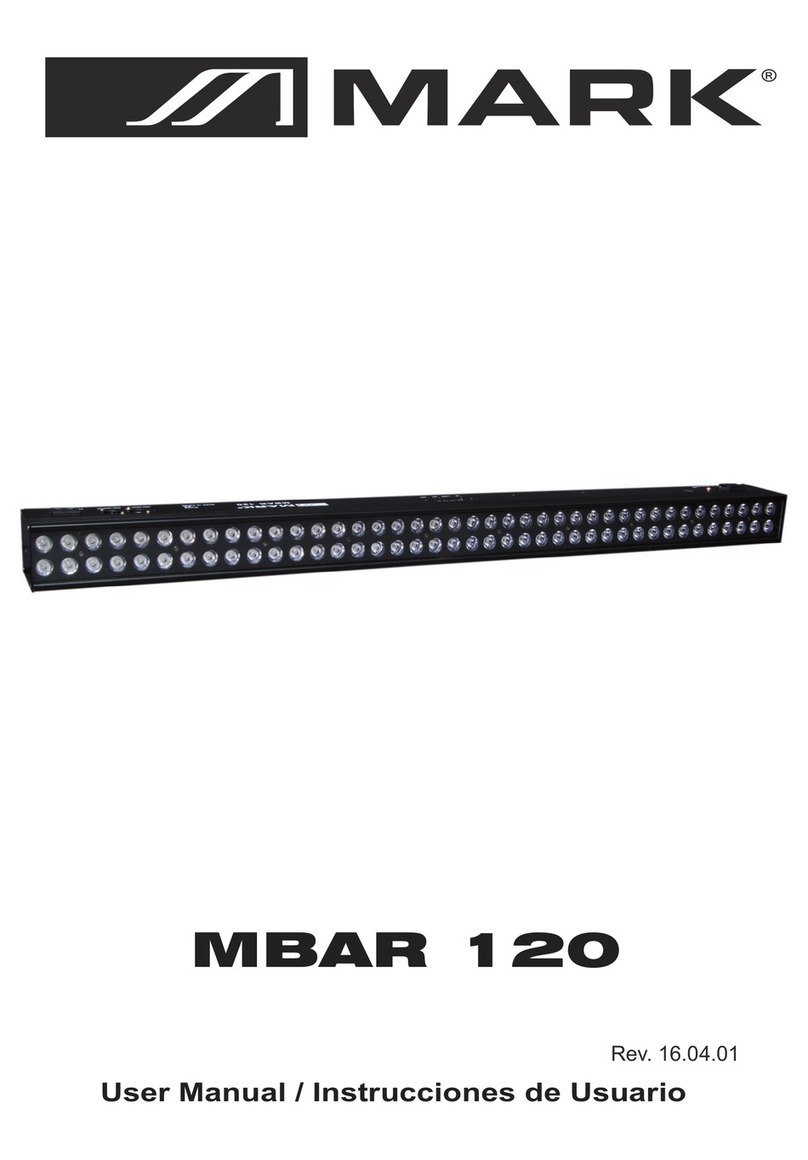
Mark
Mark MBAR 120 user manual
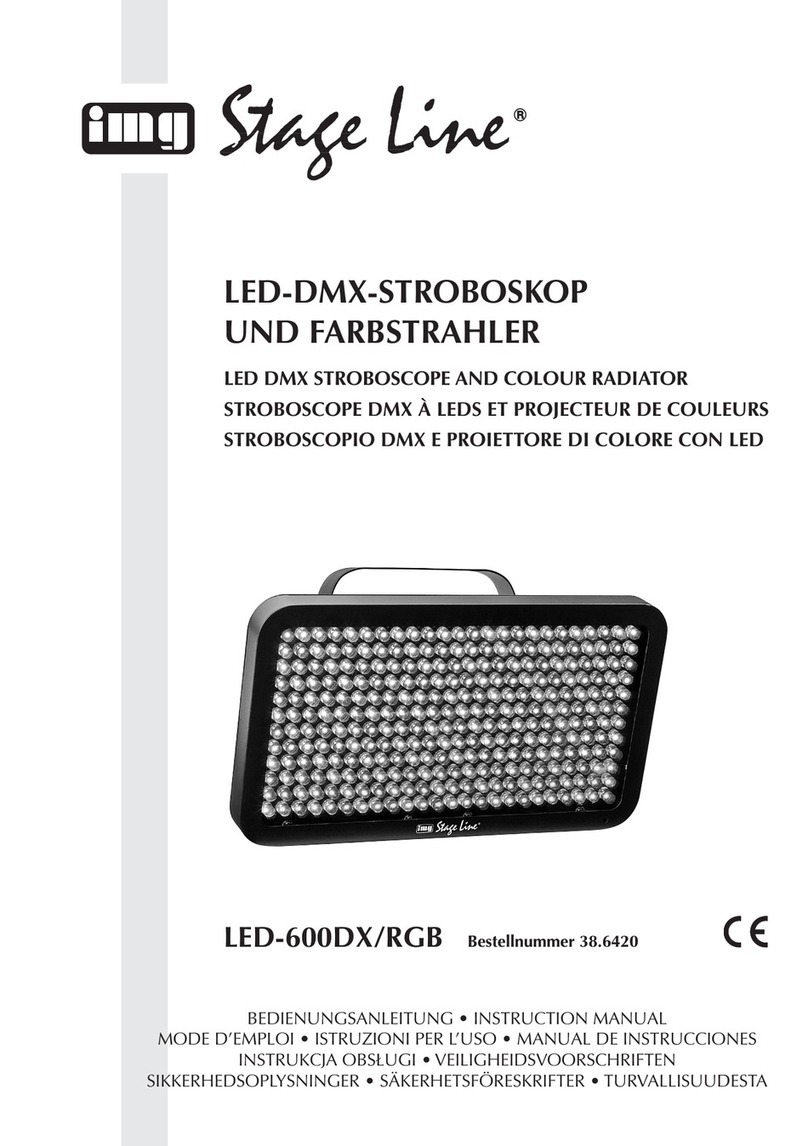
IMG STAGE LINE
IMG STAGE LINE LED-600DX/RGB manual

Solar Goes Green
Solar Goes Green SGG-FL9W-Extreme user manual
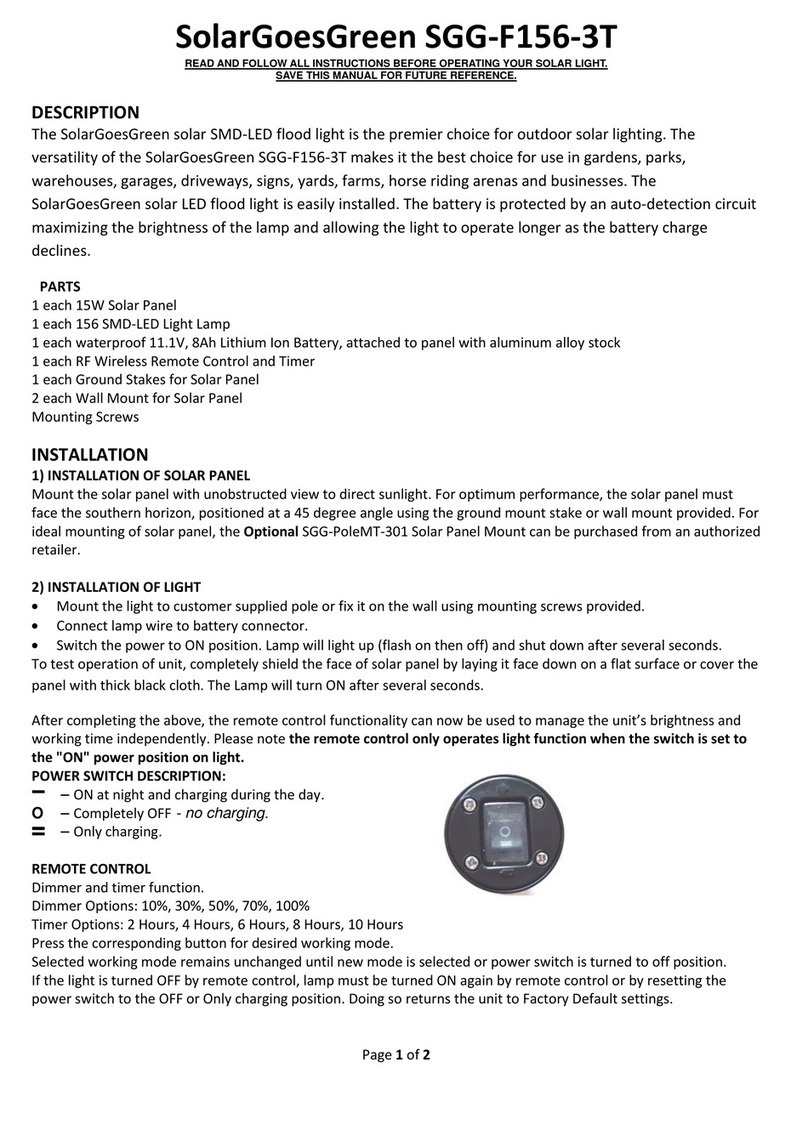
Solar Goes Green
Solar Goes Green SGG-F156-3T Installation
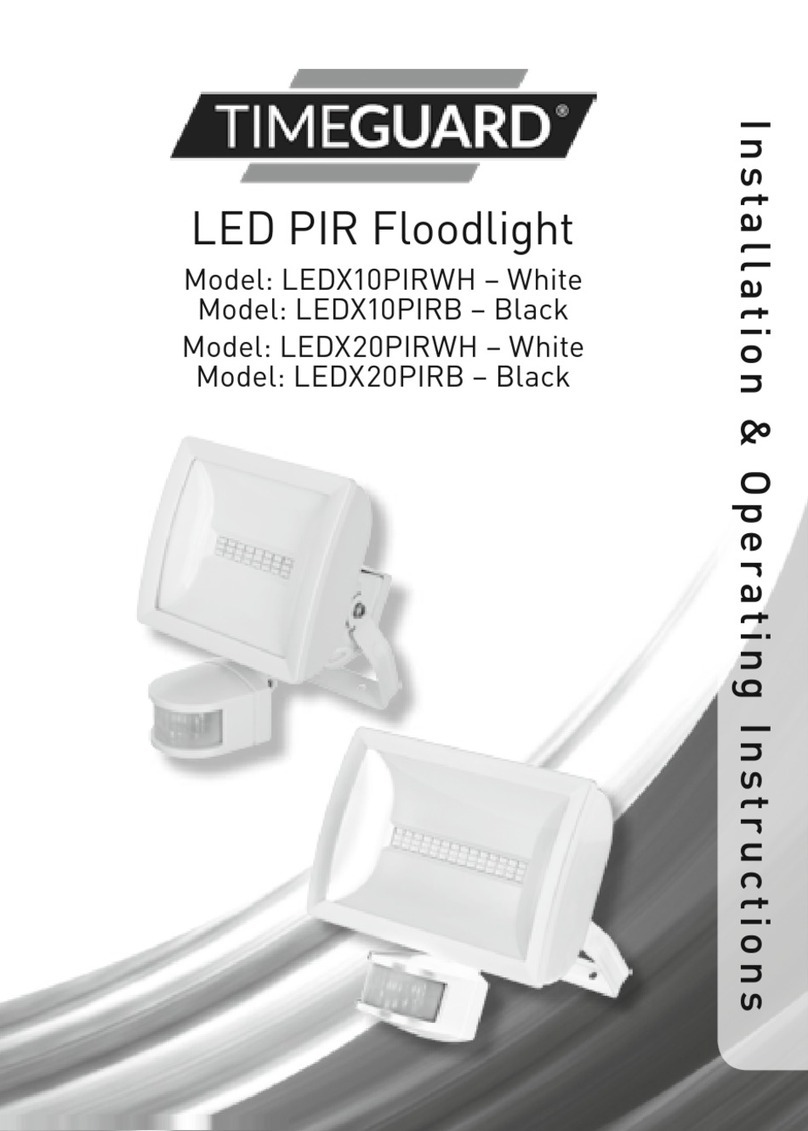
Timeguard
Timeguard LEDX10PIRWH Installation & operating instructions
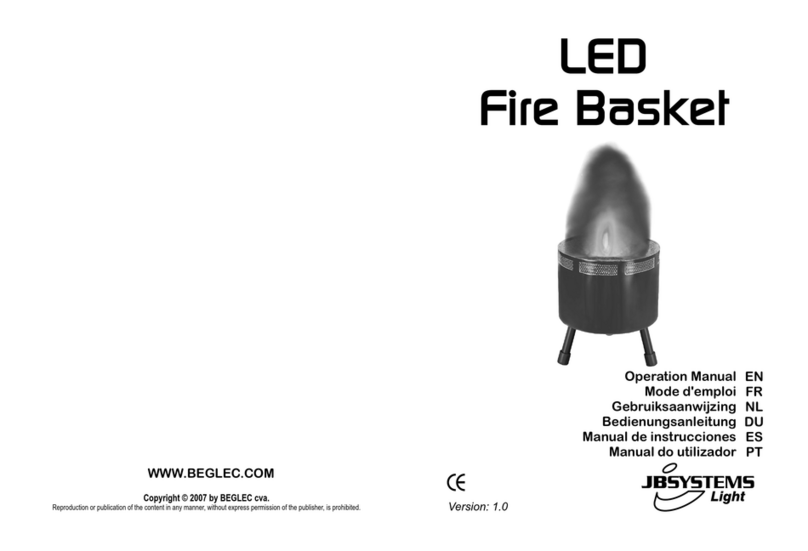
JB Systems Light
JB Systems Light LED Fire Basket Operation manual
